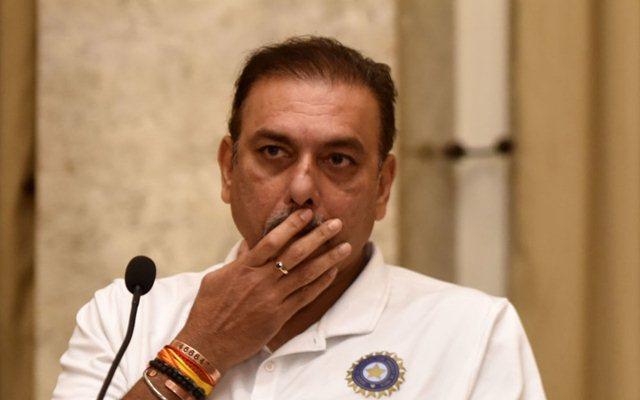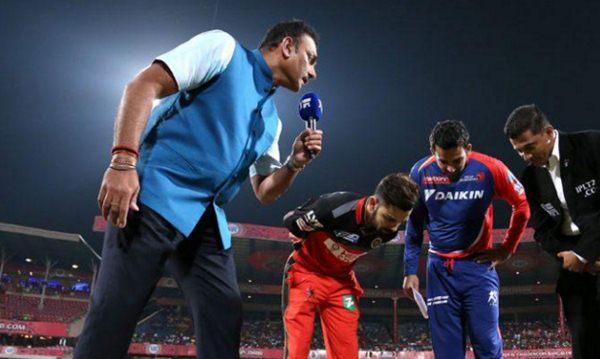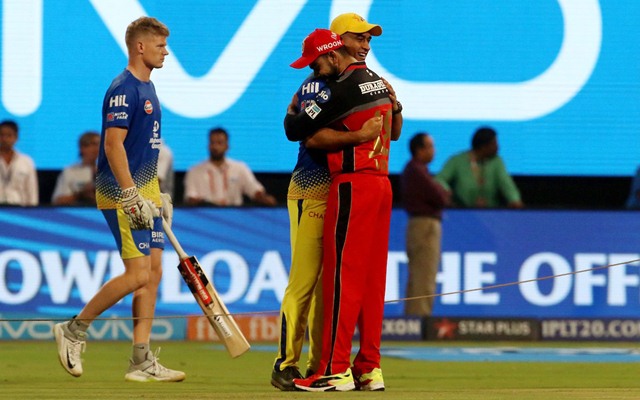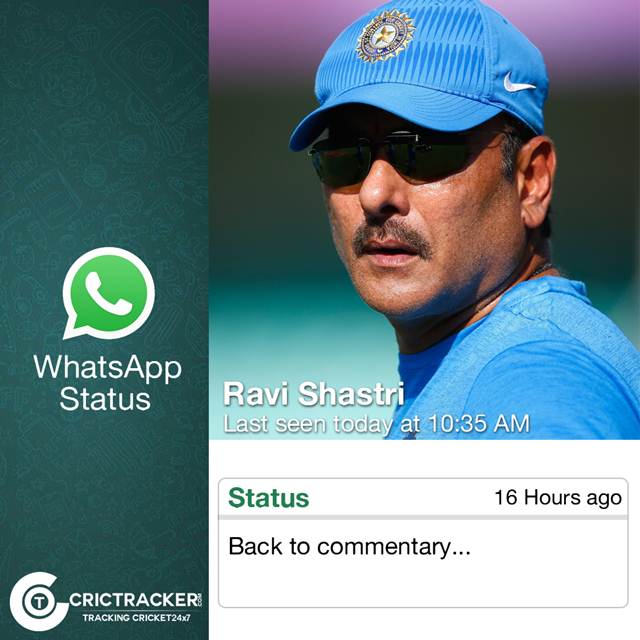5 issues Ravi Shastri needs to address in his second tenure
With just 31 defeats across 118 matches in all formats of the game, India has been the side to beat in the past two years, and Shastri will hope to carry forward the good word.
View : 2.6K
8 Min Read


Team India is all set to usher into Ravi Shastri era 2.0 as they take on the West Indies in the first Test at North Sound, Antigua on August 22. This will be Ravi Shastri’s first assignment after being officially re-appointed as the Head Coach for a period of 26 months.
With just 31 defeats across 118 matches in all formats of the game, India has been the side to beat in the past two years, and Shastri will hope to carry forward the good word that he has done with the Indian team in his previous tenure. But, as good as the numbers are, Shastri has had his fair share of disappointments too.
From the heartbreak of India not being able to breach the African barrier despite boasting of such a potent pace attack and the best Test batsman in the world to the shock exit from the 2019 World Cup, the past two years in Indian cricket have seen several moments where fans still look back and wonder: What if?
During the next 26 months, India will tour for a Test series in New Zealand, Australia, and England besides taking part in two back-to-back T20 World Cups, giving Shastri enough time to address some of the issues that plague Indian cricket currently.
5. Improving Overseas Test record
Ahh! the detractors favorite topic: that overseas record. To be fair, it has been the nemesis for Team India, and for a cricket fan growing in the 2000s, the early part of 2010s was a rude throwback to the 90s where eventually the result was painfull inevitable even before a bowl was bowled.
No team has lost more overseas Tests since the start of 2011 than India (23). While on some occasions, India has fought valiantly as they did in England (1-4) and South Africa (1-2) last year or during their 2014 tour of New Zealand (0-1), South Africa (0-1) and Australia (0-2), on others, they just capitulated meekly like they did during their back-to-back whitewashes in England and Australia in 2011/12.
On both occasions, the end result has been an amalgamation of disappointment, heartbreak, and utter agony for the fans. During India’s last overseas sojourn of the SENA countries, Shastri reckoned that the current side was the ‘greatest’ Indian side he has ever seen and that the pitch or playing conditions do not matter to them.
Well! Off-course it did, eventually. A combo of shoddy team selections, lack of preparedness and consistent misreading of playing conditions meant India squandered their best possible chance of registering their maiden series win in South Africa or break India’s dismal run of form (0-4 in 2011, 1-3 in 2014) before finally pulling one back in Australia, vindicating as to what could have been, had India been more consistent with their planning and team selections.
This stint again gives Shastri a chance to correct the wrongs that he and the team committed on the overseas tours last year.
4. Creating a pool of Test openers

Test openers are the cornerstones of their teams’ success, especially in overseas conditions. For, they not only lay the platform for their side but also the manner in which they respond to the conditions first, sends a message to the rest of their teammates.
Which is why the likes of Sunil Gavaskar, Virender Sehwag, Matthew Hayden, Gordon Greenidge, Alastair Cook are hailed as once in a lifetime opening batters; batters who depend on their style of play would set-up a platform for the shenanigans of their middle-order to take over when the conditions get easier.
A potent opening pair is at the heart of any teams’ success in SENA countries and this is exactly where India has been found wanting, every time they have toured the aforementioned countries. India’s woes can be gauged from the fact that none other than Rahul Dravid, who wasn’t even a regular opener is the only batsman to average over 35 [79.5] in SENA countries since the start of 2011. The next best is Murali Vijay, 1285 runs at 30.59 who had a great season during India’s overseas cycle between 2013-15.
Vijay was looked upon as India’s key batsman heading into the overseas cycle of 2018 but the Tamil Nadu opener could not repeat his past heroics and is currently out of reckoning from the Test set-up. India seems to have moved on from Shikhar Dhawan too in Test cricket after the southpaw continues failures against the moving ball while KL Rahul’s Test career is also on a slippery slope following his repeated failures last year. Mayank Agarwal grabbed the longstanding opportunity with both hands in Australia, and for now, seems to have nailed at least one of the openers spot.
With Prithwi Shaw out of action due to drug-related suspension, the series against the West Indies gives Rahul a great chance to once again make a strong case for himself. One of the key issues for Kohli and Shastri in the next 26 months is to ensure they create a strong pool of 4-5 opening batters, integrating the domestic performers like Abhimanyu Easwaran [3518 runs at 50.25; leading run-scorer for Bengal in the 2018-19 Ranji Trophy], Ruturaj Gaikwad [843 runs at 38.31], Priyan Panchal [6098 runs at 48.01] rather than going back to the tried and tested players.
How India deal with their opening woes, especially in overseas conditions, will certainly define their performance in New Zealand and Australia and whether they play in the WTC Final at Lord’s in 2021.
3. Cold feet on a day that matters

India’s heartbreaking loss to New Zealand in the semi-final of the World Cup is emblematic of the larger [but extremely worrying] picture that has been developing in the past five years. And, the question the Indian fans have slowly started asking themselves: Are we the new South Africa when it comes to handling the pressures of the knockout stage?
The similarities have been eerily similar, to be honest. Like South Africa of the 90s and 2000s, you take out these one-off encounters [T20 WC Final 2014, WC semi-final 2015, T20 WC semifinal 2016, CT Final 2017 & WC semi-final 2019], and the Men in Blue have been the side to beat in almost every ICC event of this decade.
As director and coach, Shastri has presided over four of those defeats since 2015, and the pattern that is developing is coming too hard to ignore. He will have two more ICC events [T20 World Cup in 2020 & 2021] and as a coach, Shastri’s prime job will be to formulate strategies to manage crisis coupled by a solid Plan B, in situations like the one we encountered in the World Cup semifinal.
2. Addressing the No.4 issue

It has been the talk of the town for so long, that the topic itself deserves a special place in the annals of 21st-century Indian cricket. Yup! That No.4 spot. The experimentations- devoid of any clear vision- around the No.4 spot ultimately cost India the World Cup.
Between trying KL Rahul at No.4 in 2017 to going back to him at the start of the World Cup, India tried a million players at the coveted spot without giving either of them an extended rope. The one who got the longest rope [Read: Ambati Rayudu] was dumped in favor of the ‘3D’ skills of Vijay Shankar, and when Shankar was injured during practice, he was replaced by a guy who had never batted at the position before [much like him] at the latter stage of the World Cup: Rishabh Pant.
The absence of a reliable No.4 has hurt India at crucial junctures, most notably, in the 2017 Champions Trophy and the semi-final of the 2019 World Cup, where their inability to cover up for the occasional blip of their world-beating top-3 has been exposed to the hilt. Shreyas Iyer, courtsey his runs, as well as his temperament, has shown all the gradient of an ideal No.4 batsman, and it is now up to Shastri and Kohli to give Iyer to whoever they think is ideal, an extended run to prove their worth. Constant chopping and changing haven’t helped any players confidence: Never has, never will.
1. Revamping India’s T20I style of play

In his latest interview to TOI, after being re-appointed as Head Coach, Shastri acknowledged that India’s T20 side is still a work in progress and only 4-5 players from the current ODI set-up fit into the T20 mold.
“One-day cricket and T20s have vastly different identities and one cannot look at it through the mere lens of ‘white-ball cricket’. T20 is a wholly different ballgame and that is how we are going to pursue it. At best four or maximum five cricketers from the present 50-over setup fit in a T20 perspective right now. We need to begin with that perspective and build on it.” Ravi Shastri said in TOI interview.
India, who currently sits at the No.5 spot in the T20 rankings, have often been accused of playing T20 cricket in the mold of ODI cricket; setting a platform before cashing on at later stages. You can turn around and say that India was treating T20s as extended preparation for the 2019 World Cup. But, with the 50-over World Cup out of the way now, India needs to revamp their style of play in T20 cricket.
In the recently concluded series against the West Indies, India rewarded players for their IPL performances, and more of it should be done, especially in the batting and wicket-keeping department, in the next year or so leading into the 2020 and 2021 T20 World Cup.
~ Written by Yash Mittal
Download Our App